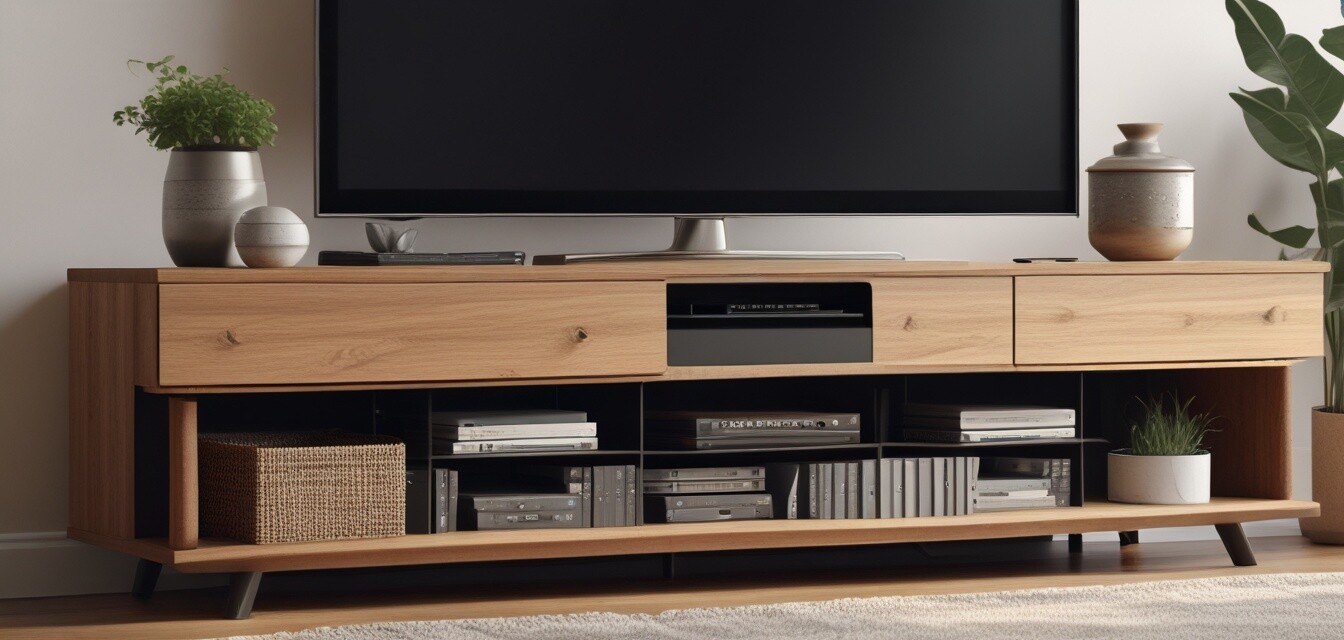
Green Living: Making Your Home Eco-Friendly Step by Step
Key Takeaways
- Transitioning to an eco-friendly home can be simple and rewarding.
- Choosing sustainable materials for furniture, like TV stands, is crucial.
- Implementing small changes contributes significantly to the environment.
- Utilize resources to learn about eco-friendly living practices.
- Maintain your eco-friendly products to ensure longevity and sustainability.
Making your home more eco-friendly doesn't have to be an overwhelming task. By taking a step-by-step approach, you can make thoughtful decisions that benefit both your home and the planet. One of the key areas to focus on is your furniture, particularly your TV stands. Let’s explore how you can transform your living space while being kind to the environment.
Understanding sustainable materials
One of the first steps to creating an eco-friendly home is understanding the materials that make up your furniture. Here are some sustainable materials to look for when selecting a TV stand:
| Material | Description | Benefits |
|---|---|---|
| Bamboo | A fast-growing grass that is renewable and durable. | Eco-friendly, lightweight, and strong. |
| Reclaimed wood | Wood that has been previously used in other projects. | Reduces waste and maintains a rustic charm. |
| Metal | Recycled metals can be used for construction. | Durable and often recyclable at end-of-life. |
| Glass | Usually recycled glass, used for shelving. | Stylish and easy to clean. |
Choosing the right TV stand
Your TV stand can play a significant role in your living space. To choose the perfect one, consider the following:
- Style: Look for stands that complement your home decor while featuring eco-friendly design.
- Size: Ensure the stand fits your television and suits your room's dimensions.
- Storage: Opt for models with built-in storage solutions to minimize clutter.
- Source: Research the brand's commitment to sustainability before making a purchase.
Making sustainable choices in your living environment
Transitioning your home to a more sustainable space involves more than just choosing eco-friendly furniture. Here are some actionable steps to enhance your home:
- Energy Efficiency: Use energy-efficient lighting and appliances to reduce consumption.
- Water Conservation: Implement fixtures that conserve water in the bathroom and kitchen.
- Recycling and Composting: Create a system for recycling and composting within your home.
- Indoor Plants: Adding greenery can help purify the air and improve your home’s aesthetics.
- Mindful Purchasing: Before buying, always consider whether the product is necessary and sustainably made.
Maintaining your eco-friendly products
Once you've selected sustainable items for your home, it's important to maintain them properly. Regular upkeep ensures that they last longer and remain functional. Here are some tips:
Tips for maintenance
- Clean wood furniture with natural cleaners to avoid damaging the finish.
- Avoid exposing furniture to direct sunlight to prevent fading.
- Check for loose screws or joints regularly to ensure stability.
- Polish metal surfaces with eco-friendly products to maintain shine.
- Keep glass surfaces clean with vinegar and water mixtures.
Exploring more options
Feel free to dive deeper into various types of sustainable TV stands to find your perfect match. Check out our Corner TV Stands, Entertainment Consoles, and Floating TV Stands categories to explore more eco-friendly options.
Conclusion
Transitioning to an eco-friendly home is a rewarding journey that not only benefits the environment but also enhances your quality of life. By making informed choices and selecting sustainable materials for items like TV stands, you can create a living space that reflects your values and commitment to a greener planet. Remember, even small steps can lead to significant changes!
Pros
- Promotes a healthier living environment.
- Reduces environmental impact.
- Enhances overall aesthetics of your home.
- Potential cost savings in energy bills.
Cons
- Generally higher upfront costs for sustainable options.
- Limited availability depending on location.
- Sometimes requires more effort in maintenance.